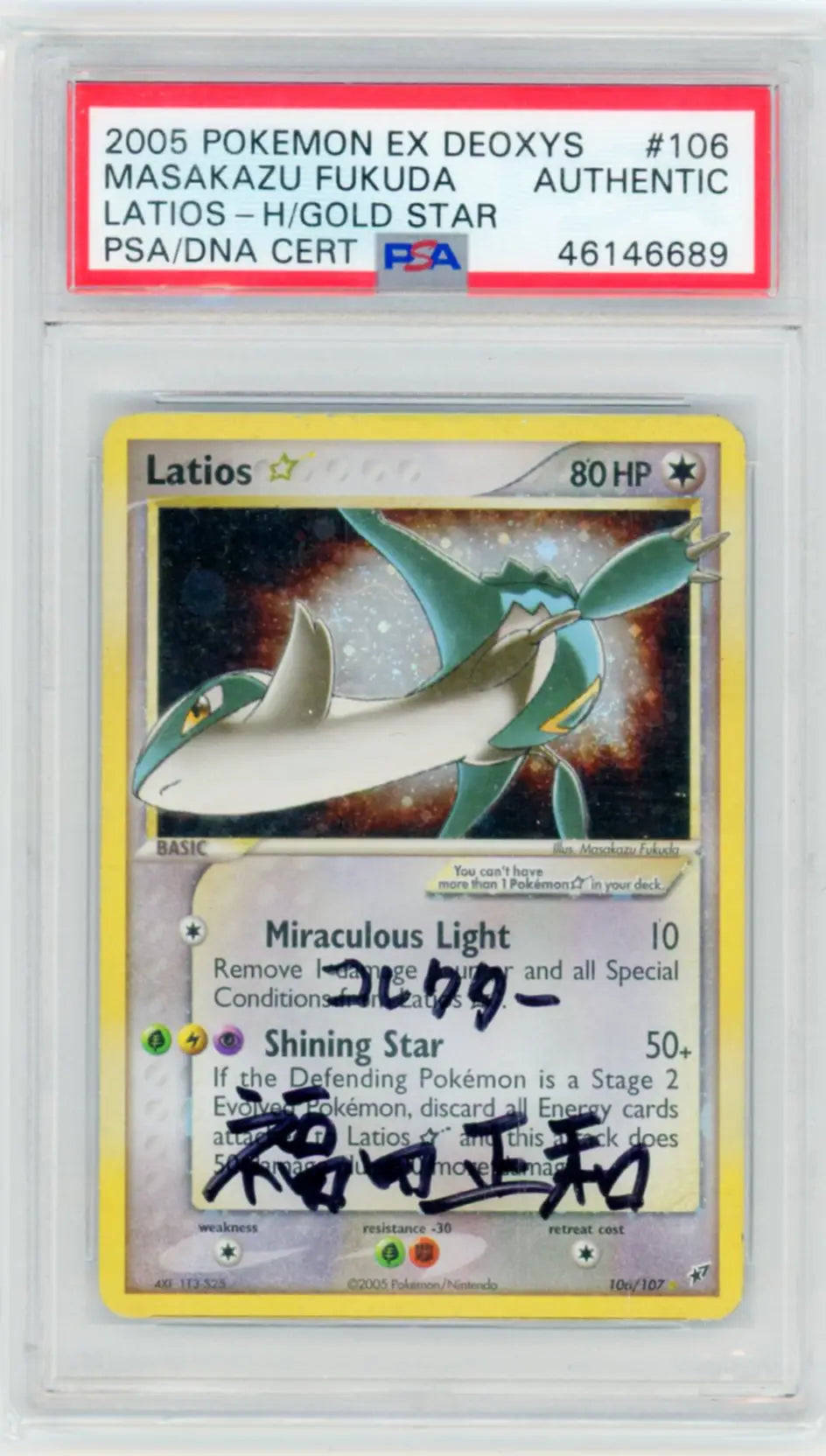Pokémon Illustrators & Their Autographs (Part 6)
Comments on Personalization of Autographs
Personalization: the addition of a name to the signature that is not of the signer. You see this generally in two forms: “To Michael” or whatever other name written in English above the autograph, or the name of the individual in Kanji (Japanese) above the autograph. Typically, the eye appeal of a Japanese personalization is greater for US Collectors because they aren’t able to read the Kanji text. It might as well just be an additional part of the autograph. The ideal autograph as a collector who didn’t get it signed themselves, however, is typically one without a personalization.
Based on common rumors, the Pokémon Company has begun requiring illustrators to personalize autographs henceforth. This would mean that all autographs acquired from here on out will not be able to have exclusively the illustrator's autograph. As time goes on, we expect the value of non-personalized cards to increase in value.
Sugimori, Himeno, Yoshida and Akabane almost always signed without a personalization. This is mostly due to the fact that they were signing way before the Pokémon Company cared about such things. As such, there is no further context needed when looking at their autographs in this specific lens. Now, let’s take a look at the illustrators who have personalized the cards they sign.
Arita now personalizes all of his cards. As the most commonly owned autograph, there have been literally dozens of events in the past that he attended and did not require a personalization. As such, it is our expectation that future signing events will not impact autograph prices, as the population of unpersonalized cards will remain the same across time. Fukuda signed exclusively with personalization at 2020 Regionals in Dallas. However, there were many a brave soul who took it upon themselves to remove the personalization. Additionally, some collectors insist that
Fukuda did smaller private signings after the Dallas event in which he did not personalize the cards. This is not confirmed and we are suspicious of this story. Generally speaking, you can expect a 2020 Fukuda autograph to contain a personalization.
If you see an unpersonalized copy of his new style autograph
[Old VS New Style Auto Pictured Here]
you can assume that it had the personalization removed. It is left up to the individual to decide if they care about this fact when deciding to purchase certain cards and how to price them.

Nishida signed, in total, 12 cards without a personalization. Her autograph without a personalization is unbelievably scarce and will remain that way. She personalized all of the cards at the second private signing event she attended because she found out that this is what the Pokémon Company required of her. All future cards (if she ever decides to sign again) will include a mandatory personalization. This is an example of an autograph that will likely have major upside in value due to the lack of personalization.
Stay tuned for part 7 ... and the rest of the story!
For follow information, questions or commentary, please us the following contact information
IG: @AestheticChimp
IG: @dickandjanes1989
Copyright @ Dick & Jane's / DJ Filips Entertainment, Inc 2022
Disclaimers and Transparency: Sales data was compiled through a few sources: PWCC Results, Goldin Auction Results, Heritage Auction Results, eBay Sales (sourced from 130point) and Private Sales Data. Some private sales data come from members of the community, other private sales data came from our own private sales. Some private sales included cards of exceptional nature and, while we recognize the importance of these sales and will touch on them when we discuss the highest known sales for each Autograph, these high-end outliers were not used in any statistical analysis that will follow. In total, we compiled roughly 100 data points across six primary illustrators: Arita, Fukuda, Saitou, Sugimori, Himeno and Nishida

